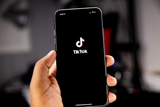On TikTok, it can be quite challenging to detect phony likes, understand odd engagement patterns, and differentiate real user profiles. Maybe you’ve ever wanted to know if the thousands of likes on a post are real or bots. There may not be a foolproof method, but there are signs that might help.
A Brief Overview on TikTok’s Algorithm
The openness of the algorithm is key to customization.
In TikTok, the algorithm acts as a curator, a kind of unseen hand that leads you through your journey. Some users try to take advantage of TikTok’s algorithm by purchasing likes or to buy real TikTok likes, but the algorithm’s power lies on its curation.
Identification of Distinct Like Patterns
Unusual like patterns can be a red flag that someone is buying TikTok likes. A warning sign would be if a user’s engagement rate didn’t increase in tandem with their video’s rapid and dramatic increase in likes.
A Sudden Exponential Rise
Be wary of TikTok profiles that suddenly have an enormous spike in likes; it may be a sign that they have bought likes instead of gaining them organically. You can detect this outlier with the use of profile activity analysis. Unless a video becomes viral, it’s unusual for a user to suddenly receive a large amount of likes.
The Rate of Engagement Is Not Consistent
If you’re looking at the like patterns and see that the engagement rates are all over the place, it could be a hint that someone bought likes on TikTok. This discrepancy could show up as unexpectedly high likes and then periods of low interaction. These patterns can be revealed by profile examination.
DISCERNING UNEXPECTED CHANGES IN LIKES
 Notice if a user’s TikTok postings get a lot of likes all of a sudden; that could be a sign that they bought the likes. These outliers can be better detected with a data-driven method, such as velocity analysis. Look into it if a TikTok user who usually gets a few hundred likes suddenly gets thousands.
Notice if a user’s TikTok postings get a lot of likes all of a sudden; that could be a sign that they bought the likes. These outliers can be better detected with a data-driven method, such as velocity analysis. Look into it if a TikTok user who usually gets a few hundred likes suddenly gets thousands.
An ‘Influencer comparison‘ is another option. Look at the likes that the suspicious account has compared to other influencers that are comparable to it. Because of how important consistency is to organic growth, any significant deviations may indicate manipulation.
Here are some things to keep in mind to make your investigation easier:
- Examine the general engagement trends on a regular basis. We should be wary of unexpected rises, particularly if there is no commensurate uptick in engagement (comments or shares).
- Post content: Take a look at the posts that are seeing the increases in engagement. Does it deviate greatly from or increase engagement compared to regular posts? In that case, it’s possible the growth wasn’t natural.
- Timing: Consider when there will be a spike in likes. Automated or bought likes can be the cause if most of the likes happen right after publishing.
